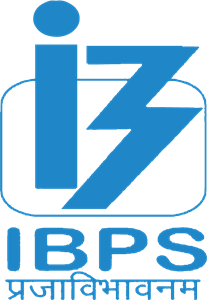
RRB NTPC 2024 exam has been announced by Railways. And recent updates suggested it’ll be held between April 2025 – May 2025. This means you’ve 5-6 months to prepare for this exam. We analyzed the previous year’s question papers and found some similarities between the SSC and RRB exams. However, as you know random study isn’t going to help you. So this RRB Cracker guide offers a strategic, subject-wise roadmap to help women candidates master the exam efficiently. This guide empowers you with essential tools, effective study techniques, and confidence-boosting strategies to excel in the RRB NTPC exam.
Three important subjects for RRB NTPC
- General Studies/ GK
- Maths
- Reasoning
General Studies: The most important and difficult topic of RRB NTPC
One of the most important yet wide subjects is GS/GK. A critical thing about the syllabus is that you need a strategic approach to each era to ensure solid preparation for RRB NTPC. Some people even consider that in comparison to SSC – RRB has a wider focus. Here’s a list of the important topics that are important as per PYQs for quick reference:
Static GK
- Indian Economy: Economic Planning, 5-year plans, NITI Aayog, Money & Banking, Budget & Inflation, Major Schemes.
- Indian Geography: Geographical locations, Physical divisions, Drainage systems, Agriculture, Transport in India, Major cities, rivers, and regional characteristics.
- Indian Polity: Constituent Assembly, Articles, Parts, & Schedules, Fundamental Rights & Duties, Directive Principles, Judiciary, Panchayati Raj, Constitutional Amendments.
- Modern History: Colonial Political, Social, and Economic Development, Revolt of 1857, Indian Freedom Struggle (1885–1947), Key statements, slogans, & Titles.
- World Geography: Universe, Earth, major mountain ranges, plateaus, deserts, lakes, oceans, and significant straits and channels.
Arts & Culture
- Festivals, Dance, Music: Traditional festivals, classical dances, popular music and instruments.
- Painting & Art Personalities: Notable Indian paintings, famous artists, and awards.
- Books & Authors: Noteworthy Indian and international books and their authors.
Key Sectors & Science
- Biology: Core biological concepts and Indian contributions.
- Computer: Basics, ISRO missions, advancements in energy.
- Science & Technology: Energy sectors, notable organizations like ISRO.
- Chemistry & Physics: Key principles and their practical applications.
International Relations
- Awards & Recognitions: Prestigious national and international awards.
- International Organizations: Important global organizations and their roles.
- First in the World: Records and historic achievements.
This list covers essential topics for effective RRB NTPC preparation, streamlining focus on core concepts across various subjects.

Maths – a high scoring subject
Here’s a breakdown of the key mathematical topics in the RRB NTPC exam, with the typical number of questions asked and their difficulty level:
- Number System (Moderate) – 2 Questions: Basic questions on integers, whole numbers, and their properties.
- Decimals – 2 Questions: Focus on operations involving decimals and decimal conversions.
- Simplification – 3 Questions: Requires applying the BODMAS rule, making calculations efficient and accurate.
- Fractions – 3 Questions: Questions cover basic operations on fractions, conversions between mixed and improper fractions, and simplifications.
- LCM, HCF – 2 Questions: Calculations of Least Common Multiple (LCM) and Highest Common Factor (HCF) of numbers, useful in divisibility-based questions.
- Ratio and Proportions – 2 Questions: Covers basic ratio calculations and their applications in real-life problems.
- Percentage (Important) – 3 Questions: Questions on percentage increase, decrease, and calculations of profit, loss, and discount are common.
- Mensuration – 3 Questions: This includes calculating areas, perimeters, volumes, and surface areas of basic 2D and 3D shapes.
- Time and Work (Important) – 3 Questions: Involves calculating work done by individuals/groups, work efficiency, and time taken.
- Time and Distance (Important) – 2 Questions: Topics cover speed, distance, time calculations, and relative speed.
- Simple and Compound Interest (Difficult) – 3 Questions: Requires understanding the principles of interest over time and compound growth.
- Profit and Loss (Important) – 3 Questions: Based on cost price, selling price, and calculating profit or loss percentage.
- Elementary Algebra – 2 Questions: Basic algebraic expressions, equations, and their solutions.
- Geometry and Trigonometry (Difficult) – 7 Questions: Geometry covers properties of shapes and angles; trigonometry includes sine, cosine, and basic identities.
- Elementary Statistics (Difficult) – 1 Question: Primarily includes mean, median, and mode.
- Probability/ Permutation – 1 Question: Basic probability concepts and permutations, often applied in theoretical situations.
- Data Interpretation (DI) – 2 Questions: Bar charts and pie charts are typically used to represent data, requiring interpretation skills.
- Average – 2 Questions: Calculation of average across numbers or values, often applied in salary or score-related questions.
- Age – 1 Question: Questions based on age, typically involving relationships and calculations of current vs. past ages.
- Partnership – 1 Question: Involves calculations of investments and share in profit among partners.
- Mixture – 1 Question: Problems related to combining substances or items with different properties.
- Train – 1 Question: Speed, time, and distance problems focused on trains.
- Boat/Race – 1 Question: Involves questions related to boat speed in still water vs. in currents, often with a relative motion concept.

Reasoning – a high-scoring yet short subject
Here’s a breakdown of the key reasoning topics for the RRB NTPC exam, along with their typical weightage and focus areas:
- Analogies – 2 Questions: Tests the ability to recognize relationships between pairs of words, numbers, or images.
- Completion of Number and Alphabetical Series – 5 Questions: Requires identifying patterns in sequences of numbers or letters and predicting the next element.
- Coding and Decoding – 2 Questions: Involves interpreting codes where letters or numbers represent other values or letters, emphasizing logical deciphering.
- Mathematical Operations – 2 Questions: Includes applying specific operations (e.g., addition, subtraction) based on conditions provided, often replacing symbols with mathematical operations.
- Similarities and Differences – 1 Question: Tests recognition of relationships or discrepancies between items, such as objects, words, or numbers.
- Relationships – 1 Question: Questions involving family or hierarchical relationships, useful for understanding family trees and relational mappings.
- Analytical Reasoning – 3 Questions: Tests logical skills through scenarios requiring deducing or interpreting facts based on given statements.
- Syllogism – 2 Questions: Involves logical conclusions from statements; useful in determining valid inferences based on premises.
- Jumbling – 1 Question: Requires arranging jumbled sentences or phrases in a logical order to form meaningful information.
- Venn Diagrams – 2 Questions: Tests the ability to represent and analyze relationships between different sets using Venn diagrams.
- Puzzle – 2 Questions: Includes logical puzzles requiring organizing information or identifying patterns in complex arrangements.
- Data Sufficiency – 1 Question: Determines whether the given data is enough to solve a question or reach a conclusion, focusing on analytical clarity.
- Statement-Conclusion – 2 Questions: Evaluates logical deductions by drawing conclusions from given statements.
- Statement-Courses of Action – 1 Question: Based on a situation, suggests potential actions and tests logical decision-making skills.
- Decision Making – 1 Question: Assesses problem-solving and logical decision-making in situational contexts.
- Maps – 1 Question: Tests spatial reasoning, often through interpreting or navigating given maps.
- Interpretation of Graphs – 1 Question: Involves analyzing data presented in graphs, often focusing on bar charts or line graphs.
Conclusion – RRB NTPC guide
Clearly, RRB NTPC exams are tough but with proper strategy you can focus on what’s important and complete syllabus in time. By targeting key areas efficiently, you can boost accuracy and confidence, ensuring a strong performance in the reasoning section and maximizing overall exam success.









